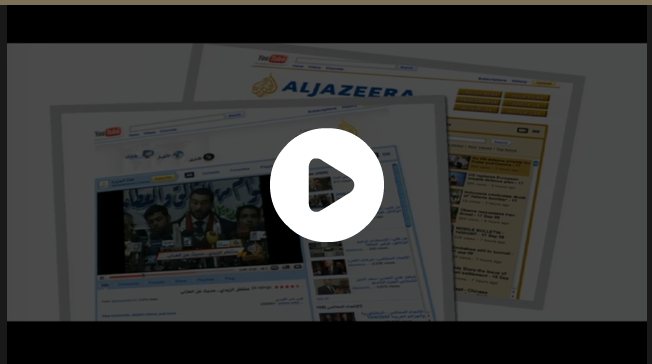“No one cares what you think,” said my reporting instructor at the beginning of term. He repeated it slowly. “No one cares what you think. That’s not your job.” I had to think about this for a while, but as I got the hang of writing classic wire service copy, I began to see the logic. Reporter as conduit. Objectivity, whatever that tricky word means. So in my story about Google Goggles, my editor obliged me to kill a paragraph stating something I knew to be true.
“Even if you know it’s true, someone else has to say it,” she said. “Your story mixes news and editorial.”
I’m not saying she made the wrong call. She’s a very nice woman and she knows a lot more about editing a newspaper than I do. I’m saying that after four days in the Jakarta Globe, I’m beginning to see how deep traditional newsroom culture runs. And I think it’s probably not the right culture for web media.
Classic newsroom values: don’t use material that your competitors came up with, and don’t speak with your own voice. Emerging web values: linking to other people’s work is honest, efficient, and valuable, and each of us is expected to add what we know to the conversation. No wonder there’s been a war brewing between “old” and “new” media.
Another example: yesterday Twitter.com was briefly hacked to point to a screen which claimed that the “Iranian Cyber Army” was behind the attack. In my self-appointed role as the interim technology editor on the Jakarta Globe web team, I felt that we should cover it. Our online readers (and Facebook and Twitter followers) are big into social media and they’d find it interesting. Our options were:
- Write an original story on the topic, perhaps making some phone calls to get original quotes.
- Run a wire service story on the topic (AP and AFP and probably others had already reported the event)
- Reblog or otherwise link to a report elsewhere.
Writing an original story is really time consuming, and duplicates effort — something that an industry facing deep revenue shortages from the loss of their advertising monopoly cannot afford. Web media thinking says 3 is the right answer: find out who has the best coverage and send readers there. But that violates classic newsy values, which say that you should avoid acknowledging the existence of any other publications if at all possible. We went with running the AFP story.
Again, I’m not saying that this was the wrong move, but it does illustrate a classic newsroom practice that doesn’t translate well to the web.
Non-journalists are probably not familiar with newswire services. These are organizations like the Associated Press (AP), Reuters, Bloomberg, Agence France-Presse (AFP) and so on that maintain huge international staffs of reporters spitting out stories as fast as possible. It’s really quite amazing to sit at a terminal and watch the news roll in over the wires, a new story every minute or so from all over the world. Newspapers subscribe to these feeds for thousands of dollars a month, both for the information and for the license to rerun stories.
It’s actually an efficient scheme — how many local papers can afford a Botswana correspondent? Running a wire story is sort of like reblogging for the old media world.
Where this scheme falls down is rewrites. “We spend a huge amount of time chasing wire stories and rewriting them so we can put our own name on it,” a reporter for the International Herald Tribune in Hong Kong told me earlier this month. “It’s stupid.”
And this is part of why wire service stories are dry as toast: the newswire company promises anonymous prose that is easy to rewrite and rebrand. Not only is this a waste of time, but the voicelessness of wire copy is a big problem for the web.
First of all, wire stories are plain text. No links at all. This is not only inconvenient for the user who wants to know more, it’s a transparency problem. The reader can’t tell what the reporter’s references are, or where they are coming from. There is no way to link this story with others by the same person, to get a sense of the author’s experience, knowledge base, and point of view. That is the difference between linking to a blog which has a public identity and history, and running a wire service story which is intentionally anonymous and therefore opaque.
Dan Froomkin of the Washington Post has summed this up masterfully by saying that the web “abhors lack of voice.”
So what’s the “right” approach? Exactly what the blog media have been doing: do what you do best and link to the rest. There are only two useful things a newsroom can do:
- Put new content online by doing original reporting
- Filter the internet to tell users where to find other good stuff.
I think a news organization has to do original reporting in some form to be worthy of the name. To develop authority and convince its audience to listen, it probably has to let its reporters expertise shine through. What newsrooms don’t seem to understand yet (and Google does) is that filtering is just as useful, if not more so. Running or rewriting wire copy does serve to inform the reader, but linking is far more efficient for the newsroom and far more useful to the reader. Any organization that wants readers to come to its site first can ill afford to pretend that the reader doesn’t want the rest of the web too.






